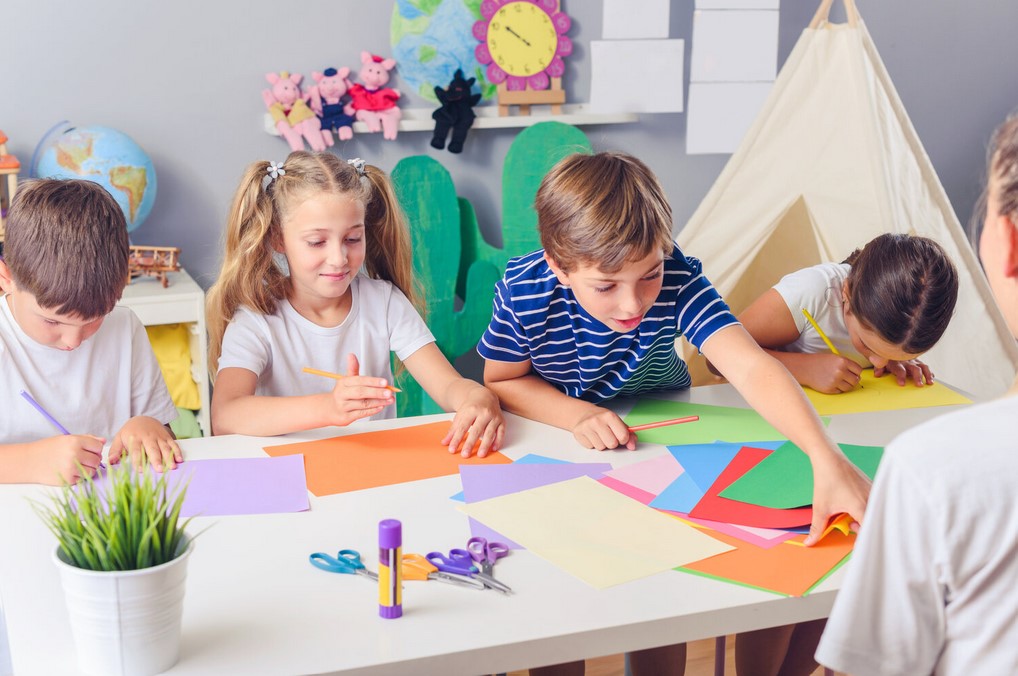Blog
Project-Based Learning at Home

Over the summer, it’s likely you are looking for anything that gets your kids away from a screen and keeps them active. Projects and project-based learning (PBL) are a great way to keep kids engaged in authentic learning and building useful skills. Projects are a good opportunity for families to do things together but also, they can be a good opportunity for kids to do things independently if that’s what the family needs.
Some ideas for projects include the following:
Rhonda Hill, director of district and school leadership at PBLWorks: “Produce and share a video of a ‘cooking show’ and plan healthy menus.”
Lisa Mireles, director of district and school leadership at PBLWorks: “Research a topic of interest (by reading, going online, or talking to or calling people) and share it with a specific person or group, by creating art pieces, 3D models, writings, music pieces, posters, or PSA videos posted on Instagram or other social media outlets.”
Middle school teacher and instructional coach Heather Wolpert-Gawron: “Plan and run a PE class for the family.”
High school math teacher Telannia Norfar: “Turn any arising family challenges into a family project; keep a list of questions and find solutions together.”
Instructional coach and educational consultant Myla Lee: “A family could go on a ‘wonder walk’ around the neighborhood and record observations, questions, and curiosities.”
High school science teacher John Derian: “Have kids design a zoo habitat for their favorite animal, using Legos, paint, markers, etc. First, observe animal live cams broadcasting from the San Diego Zoo, and then have them research the environment where their favorite animal lives.”
Erin Starkey, employee at PBLWorks: Choose one country or continent per week. The goal would be to share the beauty of our similarities (all human, all family units, all have culture, and desire to connect, etc.) and differences (within our similarities, we have different histories, languages, food, etc.) in the final product. As a bonus, you can find a pen pal from one of the areas studied.
Be patient if your children are not excited about doing these projects at first. You may be asking yourself, “how can I help my kids reap the benefits of these learning experiences without the eyerolls and groans?” Our kids need to develop essential skills and developing these skills takes practice. When we give kids a choice of what to do, and when it’s something they love (or like; like is good enough) they can develop the skills they need to succeed, driven by their own interests. They can work toward developing proficiency in a wide array of skills while engaged in an activity that captures their imagination and interest.
When this happens, our role shifts. It makes sense to slow them down, ask them questions, and help them plan and reflect. Before the kids get started, you’re your child make a plan and get organized and to anticipate and plan for challenges. A few of these questions would do:
What are you going to do today?
How long do you think it will take?
What materials do you need?
What do you think will be the hardest part?
How might you handle it if that happens?
For the most part, when things are going well, they need little intervention. But when they get frustrated, or when we see things going off track, a little redirection can nudge things back in the right direction.
How can I help?
What do you need to do next?
What do you think will happen if you do that?
How are you feeling? Do you think it would help if you took a break
When work is done (for the hour, for the day, or the project is complete), hold the space for reflection.
What went well?
What didn’t go well?
Next time, what would you do differently?
How do you feel?
How did you solve the problem?
What are you most proud of?
What is your next step for next time?
As the parent, you can notice, aloud, how they located the information they needed or worked together successfully, or how they worked hard to achieve their goal even though they were tired/frustrated/hungry. You can celebrate their success with them.
Remember, that these aren’t leading questions. (Like: what will you do after you make a mess? What will happen if you don’t? Do you really think that’s a good idea? Just what do you think you’re doing, mister!?) And they aren’t statements, either. They are generous, curious, scaffolding questions.
Even when you ask these questions, they often don’t have the answers. There might be an “I don’t know”. But in just considering the questions you are helping them build the neural pathways for planning and reflection in their brains. Just like it can take up to 40 experiences with food before a child decides they like it, it can also take numerous iterations to build those connections and insight. But soon they’ll have an answer, and eventually, they’ll be able to ask themselves the questions.
And once they have those skills (and they’ll know they have those skills because they’ve noticed and reflected on them) they will be able to call on them in the moments when the content of their task is less appealing.
Your child can also share their projects with classmates, neighbors, or other family in-person or virtually to have an authentic audience for their work. They can show them what they wrote or made, and it is a chance for them to practice their presentation skills and ask questions and get feedback.
References:
Larmer, John. “How Teachers Can Support PBL at Home.” Edutopia, 8 April 2020. 4 May 2021. https://www.edutopia.org/article/how-teachers-can-support-pbl-home
Hoyer, Emily. “Project-based Learning at Home. ”University of Vermont Tarrant Institute for Innovative Education, 22 May 2020. Retrieved 4 May 2021. https://tiie.w3.uvm.edu/blog/project-based-learning-at-home/#.YG4ZouhKjIV
Larmer, John. “PBL at Home: 3 Ideas for Projects Families Can Do.” PBL Works, 2 April 2020. Retrieved 4 May 2021. https://www.pblworks.org/blog/pbl-home-3-ideas-projects-families-can-do

